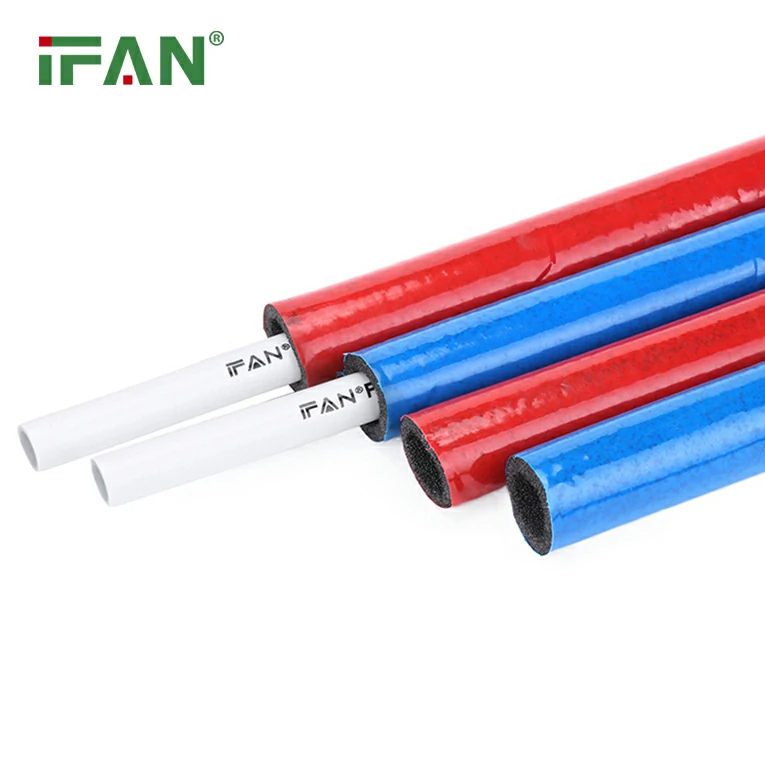In recent years, the use of cross-linked polyethylene (PEX) piping has gained popularity in residential and commercial plumbing systems due to its flexibility, ease of installation, and resistance to corrosion. However, a recent study conducted by the Construction and Sustainable Practices (CuSP) group has raised significant concerns regarding the fire safety risks associated with plastic PEX pipes. This article delves into the findings of the CuSP study, the implications for fire safety, and the steps that can be taken to mitigate these risks.

1. Understanding PEX Pipes
1.1. What is PEX?
PEX, or cross-linked polyethylene, is a type of plastic piping that is widely used for plumbing, heating, and cooling applications. Its unique properties, such as flexibility, resistance to scale and chlorine, lower shipping costs, and ease of installation, have made it a popular choice among builders and homeowners alike.
1.2. The Composition of PEX
PEX pipes are manufactured through a process that involves cross-linking polyethylene molecules. This cross-linking enhances the material’s strength and thermal stability, allowing it to withstand higher temperatures and pressures compared to conventional polyethylene pipes. While these properties make PEX an attractive option for plumbing, they also raise questions about its performance in fire scenarios.
2. Key Findings of the CuSP Study
2.1. Fire Performance of PEX
The CuSP study focused on evaluating the fire performance of plastic PEX pipes under various conditions. Key findings from the study include:
- Flammability: PEX pipes were found to be more flammable than traditional metal piping materials. When exposed to high temperatures or open flames, PEX can ignite and contribute to the spread of fire.
- Smoke Emission: The study indicated that burning PEX releases significant amounts of smoke and toxic gases, including carbon monoxide, which poses a serious risk to occupants during a fire event.
- Heat Resistance: While PEX is designed to withstand high temperatures, prolonged exposure to fire can lead to rapid degradation of the material, compromising its structural integrity and leading to potential failure in fire suppression systems.
2.2. Case Studies
The CuSP study also examined real-world case studies where PEX piping was involved in fire incidents. These case studies highlighted how PEX pipes contributed to fire spread in residential and commercial buildings, raising concerns about their safety in fire-prone environments.
3. Implications for Fire Safety
3.1. Increased Risk of Fire Spread
The findings of the CuSP study suggest that the use of PEX pipes in building construction may increase the risk of fire spread. In the event of a fire, PEX can melt and drip, allowing flames to travel through spaces that might otherwise be protected by non-combustible materials.
3.2. Challenges for Firefighters
Firefighters face unique challenges when dealing with fires involving PEX piping. The potential for rapid fire spread and the release of toxic smoke can complicate firefighting efforts and pose risks to first responders.
3.3. Building Codes and Regulations
The study’s findings may prompt a reevaluation of building codes and regulations concerning the use of PEX piping in fire-prone areas. Stricter guidelines may be necessary to ensure the safe installation and use of PEX in residential and commercial buildings.
4. Mitigating Fire Safety Risks
4.1. Use of Fire-Resistant Materials
One of the most effective ways to mitigate the fire risks associated with PEX pipes is to use fire-resistant materials in conjunction with PEX. This can include using fire-rated insulation or protective sleeves around PEX pipes to reduce the risk of ignition.
4.2. Proper Installation Practices
Ensuring that PEX pipes are installed according to manufacturer recommendations and local building codes is crucial for minimizing fire risks. This includes avoiding installation in areas prone to high temperatures and ensuring that pipes are not exposed to open flames.
4.3. Regular Inspections and Maintenance
Regular inspections of plumbing systems that utilize PEX pipes can help identify potential issues before they become serious problems. Homeowners and building managers should be vigilant about checking for signs of wear, damage, or exposure to heat sources.
4.4. Education and Training
Educating builders, contractors, and homeowners about the fire risks associated with PEX pipes is essential. Training programs can help ensure that all parties involved in construction and maintenance understand the importance of fire safety and the proper handling of PEX materials.
5. Conclusion
The CuSP study has shed light on the fire safety risks associated with plastic PEX pipes, highlighting the need for increased awareness and proactive measures to mitigate these risks. While PEX pipes offer numerous benefits in terms of flexibility and ease of installation, their flammability and potential to contribute to fire spread cannot be overlooked. By implementing proper installation practices, using fire-resistant materials,





